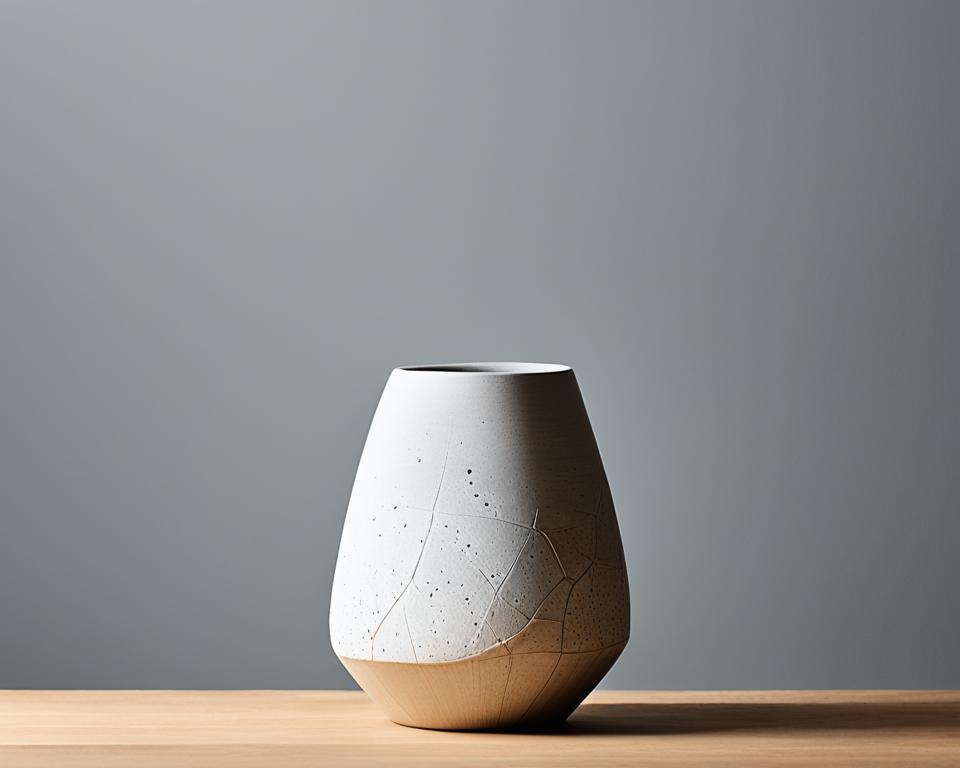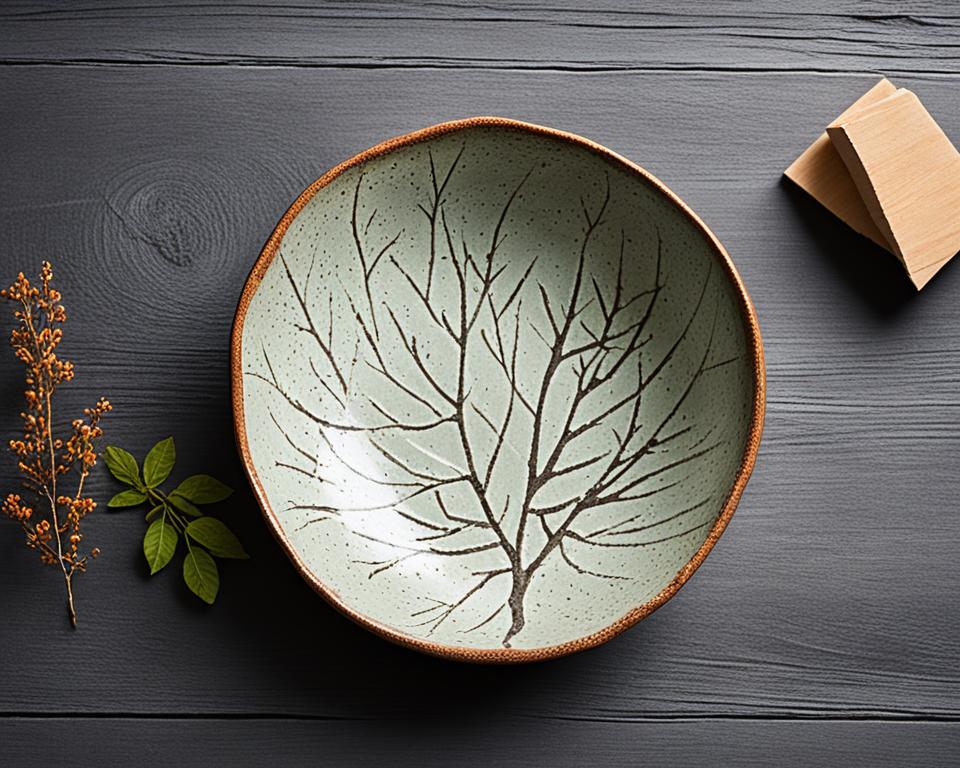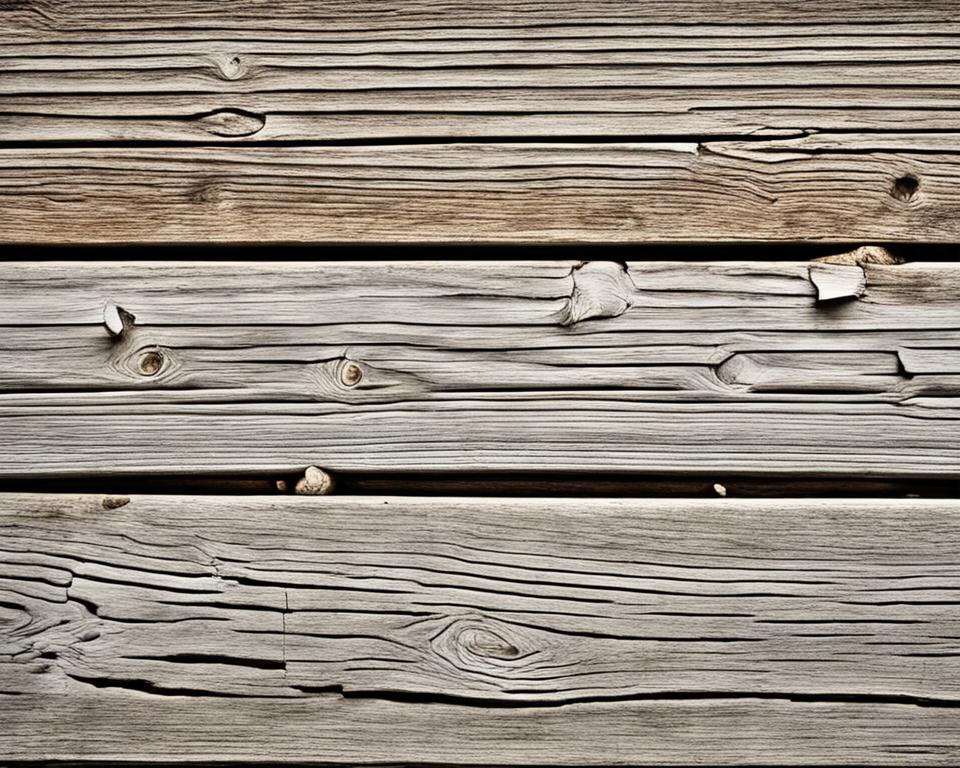In today’s world, people often chase after perfect and identical things. But, the Japanese idea of wabi sabi shows us another way. It finds joy in the imperfect, the changes, and simple, natural beauty. This teaches us to see the beauty in things not being perfect, in nature’s simplicity and changes.
Wabi sabi impacts how we design our living spaces, buildings, and art. It leads to making things that feel real and lasting. By using wabi sabi, designers create spaces and items that touch our hearts. They mirror the natural way things grow, fade, and then start anew.
Read interesting things at : info-kirara
Key Takeaways
- Wabi sabi is a Japanese aesthetic that celebrates the beauty of imperfection and impermanence.
- It encourages the appreciation of natural simplicity and the inherent flaws in the world around us.
- Wabi sabi has influenced various design disciplines, including architecture, product design, and interior design.
- By embracing wabi sabi, designers can create more authentic, sustainable, and emotionally resonant spaces and products.
- Wabi sabi challenges the notion of perfection and encourages a more mindful, appreciative approach to design.
The Ancient Roots of Wabi Sabi
Wabi sabi is a key part of traditional Japanese beauty beliefs and dates back to the 15th century. It emerged as a contrast to the fancy styles the wealthy preferred then. Fundamentally, wabi sabi highlights loving the slight flaws in things and understanding that everything changes.
This approach takes ideas from Buddhism and extends them to Japanese art, building design, and daily life. It turns away from the idea of everything being perfect. Instead, it sees value in what’s imperfect or temporary.
Exploring the Origins of the Japanese Philosophy
The roots of wabi sabi reach back to the Muromachi period (1336-1573). This was when the tea ceremony, called chanoyu, became important. This practice highlighted plainness, respect for simple things, and the use of natural materials. It played a major role in shaping the wabi sabi aesthetic.
As the tea ritual grew, so did the wabi sabi philosophy. It started showing in pottery, art, calligraphy, and garden planning. This focus on the imperfect and nature is central to the Japanese view. It influences how they see and value the world.
“Wabi sabi is the beauty of things imperfect, impermanent, and incomplete.”
Even today, wabi sabi is a big part of Japanese culture. It touches everything from style and how buildings are made to daily life. It continues to remind people of the beauty in the natural world and why it’s okay to not be perfect.
Defining Wabi Sabi
Wabi sabi is about seeing the beauty in imperfection. This philosophy comes from Japan and highlights the unique flaws in everything. It teaches us to find joy in things that aren’t perfect, and that change is part of life.
Understanding the Essence of Imperfection
Wabi sabi’s key idea is that imperfection is natural. It shows there’s beauty in what’s not smooth or complete. This teaches us to value change and enjoy things as they are.
“Wabi sabi is the beauty of things imperfect, impermanent, and incomplete.” – Leonard Koren
This philosophy loves simple, natural things. It prefers items made by hand and old things over new. It helps us appreciate the beauty around us everyday.
Imagine admiring a twisted tree or an oddly painted bowl. Wabi sabi asks us to see beauty outside of perfect shapes. It shows us beauty that’s different and special.
Wabi Sabi in Nature
The wabi sabi worldview is clearly present in nature. It celebrates the unique irregularities of the world. For example, look at a weathered rock or the crooked branches of a tree. Even the tiny flaws on a flower show us the beauty in imperfection.
When we see beauty in these natural shapes, it inspires us. Artists and creators can use these ideas. They might make a sculpture out of driftwood or shape ceramics by hand. These creations reflect wabi sabi’s spirit. Each one shows the beauty in being different.
“In a world of mass production and technological perfection, wabi sabi reminds us that all things are impermanent and imperfect. By appreciating the beauty in these natural flaws, we can find a deeper sense of harmony and authenticity in our lives and our designs.”
The old look of stones and the shifting sands offer endless beauty. We learn to see the beauty in the smallest things. This changes how we design. Products and spaces made this way feel alive and connected to the earth.
Principles of Wabi Sabi Design
Wabi sabi design values simplicity and the beauty of natural elements. This approach celebrates the charm in imperfect shapes and forms. It creates a unique and deep beauty that draws the viewer in.
Simplicity and Naturalness
The core of wabi sabi is simplicity and a connection to nature. Designers use items like unfinished wood and irregular ceramics. They avoid fancy decorations and focus on simple, natural objects to create peaceful spaces.
Asymmetry and Modesty
Wabi sabi design loves asymmetry and imperfection. Instead of perfect harmony, it finds beauty in uneven shapes and forms. This could mean a unique ceramic vase or how furniture is placed in a room. The goal is to create a balance of elegance and simplicity, urging people to stop and enjoy the beauty of flaws.
“In wabi sabi, beauty is not in the perfection of parts, or in grand design, but in the little things – the chance interplay of light, materials, shapes, and textures.” – Leonard Koren
By focusing on simplicity, nature, irregularity, and humility, wabi sabi designers make serene spaces. These places hold a deep beauty, drawing people in with a sense of calm and authenticity.
Wabi Sabi in Architecture
The principles of wabi sabi shine in Japanese architecture. Buildings are made to flow with nature around them. You’ll notice raw features like visible beams, rough surfaces, and not perfect shapes. These capture the feel of nature’s imperfections, bringing calm and harmony.
In wabi sabi design, simplicity and the beauty of the natural are key. Architects let materials show their natural aging. This creates a unique look that Western styles don’t often highlight.
An important part of wabi sabi style includes using asymmetry and modesty. Buildings may look a bit off with their designs. This adds to a sense of natural balance. Seeing and accepting these flaws is part of the beauty experience.
“In wabi sabi design, the aim isn’t perfect looks. It’s about finding beauty in what time and nature change.”
By using wabi sabi, Japan’s architects have made buildings that fit right into their natural settings. They help us feel at peace and connected to the earth. This style of design has reached far beyond Japan. It’s a guiding light for designers all over. They, too, want to highlight the charm of what’s not flawless.
Embracing Imperfection in Product Design
In product design, wabi sabi teaches us to love imperfections and flaws. It moves us away from perfect, mass-produced things. Instead, it makes us see the value in unique, one-of-a-kind items. Think of the charm in a handmade cup’s shape or the beauty in a scratched table.
Celebrating the Beauty of Flaws
Wabi sabi tells us not everything needs to be without fault to be cherished. It asks us to see beauty in life’s marks. So, design isn’t about hiding mistakes but showcasing the story they tell. It helps create products that truly stand out, each telling its own tale.
- Showcasing the organic variations in handcrafted ceramics
- Highlighting the patina and character of aged metal surfaces
- Allowing the natural grain and knots in wood to shine through
Designers can use wabi sabi principles to make items that do more than just work. These products sing with a special kind of beauty. It’s about making things that touch people on a deeper level. This approach turns what some might call flaws into something alluring and meaningful.

“The most precious things in the world are thought to be imperfect, incomplete, and impermanent.”
– Junichiro Tanizaki, Japanese author and aesthetician
Wabi Sabi and Sustainability
The Japanese idea of wabi sabi and our push for sustainability are deeply linked. They focus on the fact that everything changes and nothing’s perfect. This view leads to creating things that last longer, needing less replacement and use.
Wabi sabi teaches us to see the natural flow from start to end. It fits perfectly with what sustainability tries to do. Both want to use less, keep waste down, and match nature’s beat. This means picking materials that last, and designing things that get even better with time.
The Ecological Impact of Appreciating Impermanence
Seeing beauty in imperfection keeps designers from making things that fail fast. They might choose ways that work with natural growth and breakdown. This leads to designs that are more respectful of our world.
- Embracing the natural aging process of materials, rather than seeking to preserve a flawless appearance
- Designing for adaptability and modularity, allowing products to be repaired, repurposed, or upgraded over time
- Selecting renewable, biodegradable, or recycled materials that have a lower environmental impact
- Prioritizing craftsmanship and quality over mass production, fostering a deeper connection between the user and the object
Mixing wabi sabi with green design makes a more balanced and strong tomorrow. It values the beauty in not being perfect, and sees the real worth in what we use.
“The beauty of a broken vase lies in its ability to be reassembled, not in its flawless original state.”
Wabi Sabi in Interior Design
In interior design, the idea of wabi sabi is highly valued. It’s an old Japanese concept that finds beauty in imperfection and nature. It leads to the creation of peaceful living areas.
Wabi sabi focuses on the simple and natural. It uses things like raw wood furniture, unglazed ceramics, and not-perfect layouts. This creates a quiet beauty that encourages people to pause and enjoy what they see.
Simplicity and naturalness are core to wabi sabi. It’s about stripping the design back to basic forms. This allows the true beauty of materials to stand out. Such a design creates a calming space that lets people deeply enjoy where they live.
Asymmetry and modesty are also important in wabi sabi design. It’s not about perfect balance but more about a harmonious feeling. Objects and layouts might be a little lopsided, which adds interest. This way, people learn to see the real charm in what’s around them.
Adding wabi sabi to design makes homes both stunning and calming. With a focus on natural materials and unique shapes, these spaces are a break from our fast, digital world. They bring us closer to the simple, timeless beauty of nature.
The Influence of Wabi Sabi on Modern Art
The ideas of wabi sabi changed modern art. This Japanese way finds beauty in flaws and the temporary. Artists today look to wabi sabi for its love of natural shapes, uneven designs, and not-quite-perfect textures that are part of this old philosophy.
Wabi sabi inspired a style called abstract expressionism. It’s seen in works by Jackson Pollock and Willem de Kooning. They loved the nature of wabi sabi, where chance creates unique beauty. Their art shows this by celebrating the rough, unfinished aspects of their work.
Exploring the Wabi Sabi Aesthetic in Contemporary Art
But it’s not just in paintings. The wabi sabi vibe shines in many types of art today. Japanese creators, especially, use wabi sabi in their art. For example, Zen paintings and calligraphy show brush strokes and designs that aren’t perfect. They highlight the beauty of natural, uneven shapes.
In sculptures and installations, artists also focus on asymmetry and the charm of what’s not perfectly shaped. They make art that seems raw, unfinished, or just a bit off. But these pieces celebrate realness and a link to nature.
“Wabi sabi reminds us that we are all transient beings on this planet—that our bodies, as well as the material world around us, are in the process of constant change and dissolution.” – Andrew Juniper, author of “Wabi Sabi: The Japanese Art of Impermanence”
Artists now use wabi sabi ideas to question old views of beauty. They invite audiences to see the charm in what’s unexpected, imperfect, and always evolving in the world.
Cultivating a Wabi Sabi Mindset
Embracing wabi sabi from Japan is more than design principles; it’s a whole way of living. It encourages us to appreciate the beauty in imperfection, the idea that nothing lasts forever, and life’s cycles. This mindset helps us feel happier, more flexible, and kind towards ourselves and others.
At its core, wabi sabi believes beauty exists in what is not perfect, temporary, or unfinished. It asks us to enjoy the natural flow of things, rather than seeking perfect outcomes. Nature shows us in its cycles of birth and death how precious and beautiful life is.
“The wabi sabi mindset is about embracing the beauty in the imperfect, the incomplete, and the impermanent. It’s about finding contentment in the moment and cultivating a deep respect for the natural cycles of life.”
Maintaining a wabi sabi way of thinking can include several activities:
- Being mindful and meditating to focus on each moment
- Enjoying simple joys rather than seeking perfect items
- Appreciating old age and the charm of used goods
- Being thankful for the world’s constant change
Shifting to a wabi sabi mindset helps us feel more at peace, flexible, and connected. It’s a strong counter to the pressure to be perfect that’s common nowadays.
Finally, the wabi sabi mindset tells us to accept life’s flaws and its fleeting nature. This acceptance can bring us joy, peace, and a deep love for the simple, the broken, and the ever-changing.
Wabi Sabi in Fashion and Textiles
The wabi sabi look is gaining popularity in fashion and textiles. Designers are using natural materials like raw silk and linen. They love the beauty of unfinished, asymmetrical edges and patterns.
Eileen Fisher’s designs are a great example. She focuses on organic shapes and uses neutral colors. Her clothes often show off natural wrinkles, adding to their beauty.
Issey Miyake, a Japanese brand, is known for unique textile designs. Their “pleats please” designs bring movement. This echoes wabi sabi’s love for imperfection.
Fashion designers are not the only ones adopting wabi sabi. In textiles, it shows up in handweaving and natural dyes. Pampa and Lapuan Kankurit make home goods that celebrate imperfection.
“Wabi sabi encourages us to find beauty in the imperfect, the impermanent, and the incomplete. This philosophy can be a powerful source of inspiration for fashion and textile designers, who can use it to create pieces that are both timeless and unique.”
By following wabi sabi, designers are making fashion that stands out. They focus on simplicity and natural looks. This appeals to people who care about the Earth and want unique designs.
The Art of Wabi Sabi Pottery and Ceramics
In pottery and ceramics, Japan’s wabi sabi philosophy is at home. It’s about celebrating imperfections. Artists use asymmetry and unique textures in their work. This is very different from the perfectly made, mass-produced ceramics we see today. With these imperfections, each piece becomes truly one-of-a-kind, showing its natural beauty.
The wabi sabi way appreciates the short-lived and changing nature of things. It values the imperfections made while creating. Artists often show their marks on the work, like fingerprints and irregular shapes. They believe this enhances the piece’s character and makes it more personal.
Embracing the Beauty of Imperfect Forms
A wabi sabi ceramic piece might not be perfectly straight, have an uneven edge, or show unique glaze patterns. These are not seen as errors. Instead, they are recognized as part of the material’s true nature and the process of creation.
This contrasts with industrialized ceramics which aim for absolute uniformity. Wabi sabi’s embrace of imperfection invites us to slow down. It encourages us to see and appreciate the special qualities in each item.

“The most precious thing in a tea bowl is the cracks.” – Sen no Rikyū, 16th-century Japanese tea master
Seeing beauty in imperfection isn’t just a design choice. It’s a philosophy that hints at life’s transient nature. By celebrating these imperfections, wabi sabi teaches us humility and respect for the ever-changing world.
Conclusion
The philosophy of wabi sabi teaches us to see beauty in imperfection. It values simple, natural things that change over time. This approach, when applied to design, makes our spaces and products more real and long-lasting. In today’s fast world, wabi sabi reminds us to slow down and enjoy things as they are. It shows us how to find happiness in what makes each thing special, even if it’s not perfect.
Wabi sabi changes how we look at the world. It helps us see beauty in things that are not whole, or don’t last forever. This idea leads to a greater understanding of life’s ups and downs. It encourages us to be okay with how things change. With wabi sabi, we learn to truly see and be grateful for what’s around us. It teaches us what it means to be truly alive.
As we deal with modern life’s twists and turns, wabi sabi shows us the way. It guides us to create harmony and peace in the middle of it all. By using wabi sabi in our designs and living spaces, we can find more meaning in our daily life. We come to value the beauty in things that are not perfect. This approach lets us understand that flaws are natural, making our lives richer.
